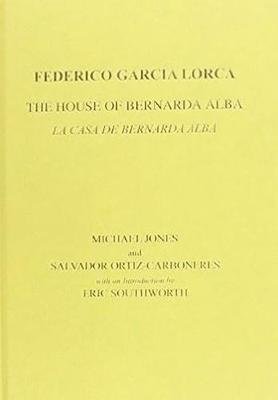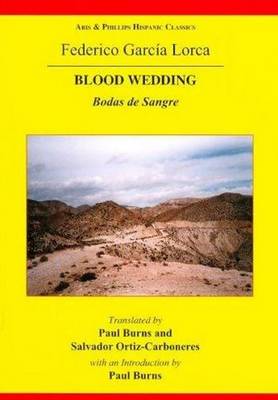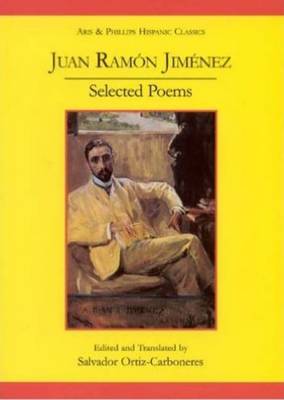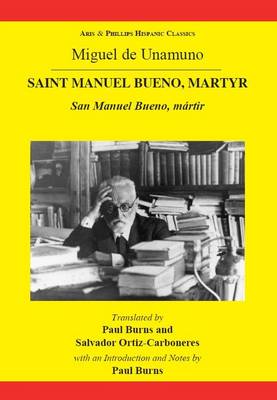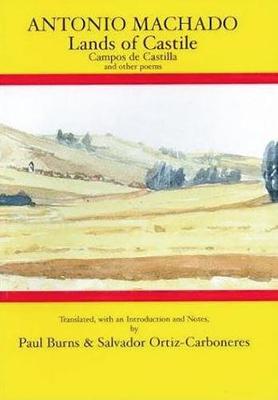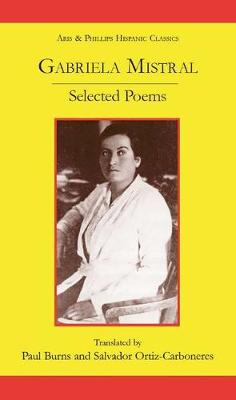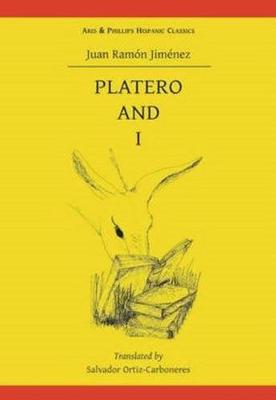Aris & Phillips Hispanic Classics
7 total works
Lorca: The House of Bernarda Alba: A Drama of Women in the Villages of Spain
by Salvador Ortiz-Carboneres and Eric Southworth
Published 2 April 2009
La casa de Bernarda Alba (The House of Bernarda Alba) was one of the last plays to be written by Lorca, shortly before he was executed by the Franco regime at the age of 38, in 1936. It was not performed until 1945 several years after his death. Along with Blood Wedding and Yerma it forms Lorca's Rural Trilogy. The play is based around five daughters who live with their fearsome and tyrannical mother. The daughters have been kept sheltered from the opposite sex, but the arrival of a suitor after their father's death catapults the family into a downward spiral of sexual jealousy and death. The play explores themes of sexual oppression, passion, and conformity, and examines women's lives in Spain at the end of the 19th and beginning of the 20th century. Bernarda's cruel tyranny over her daughters foreshadows the stifling nature of Franco's fascist regime, which was to arrive just a few weeks after Lorca finished writing his play. The introduction by Eric Southworth addresses the main issues of the play and the issues involved in translating it.
Federico Garcia Lorca was born near Granada in 1898. Initially set on studying music in Paris, after his piano teacher died in 1916 he became involved in a literary and artistic group, including H G Wells and Rudyard Kipling. This move towards a more literary life eventually paid off. Blood Wedding (Bodas de Sangre) was written in 1932, and was first performed in Madrid in March 1933. It proved to be the popular and critical success he'd been waiting for. When the play was staged in Buenos Aires he even found himself confronted with the prospect of wealth - a prospect that soon became a reality. This prosperous, happy spell was short-lived though, as the political situation in Spain altered under Franco, putting an end to this time, and ultimately, his life. Lorca was executed on August 18th 1936. Blood Wedding is based around the story of a young woman who, unable to wed her lover is made to marry a more suitable man. On the day of her wedding, however, La Novia (The Bride) runs away with her lover (Leonardo), who is married with children. A series of events ensues... Leonardo is the only character in the play to have a name, the others all being identified by their role: El Novio (The Groom), La Suegra (The Mother-in-Law). As with many of Lorca's plays, symbolism is key, with the moon and death personified. This is the first play in Lorca's trilogy of rural tragedies, with Yerma and The House of Bernarda Alba
Juan Ramon Jimenez: Selected Poems (Poesias escogidas)
by Salvador Ortiz-Carboneres
Published 23 May 2006
Juan Ramon Jimenez (1881-1958) was awarded the Nobel Prize for Literature in 1956, yet his work remains far less well-known in the English-speaking world than it deserves. Jimenez was a prolific writer - his collected verse fills twenty volumes - and his early poems were first published whilst still in his teens. During the early twentieth century Jimenez wrote and published voraciously and was very active within Spanish-speaking literary circles. In 1939, he left Spain for America, eventually settling in Puerto Rico until his death in 1958. It is difficult to hang a label on Jimenez' work, for his influences were many and his output vast. These selected poems, published here in English and the original Spanish, give the reader a chance to explore this remarkable talent. Spanish text with facing-page translation.
Miguel de Unamuno y Jugo was born in Bilbao on 29th September 1864. He wrote novels, essays, poems and plays, and in addition to these he played an important part in the political and intellectual life of Spain - an involvement that led to his exile to Fuerteventura in 1924. San Manuel Bueno, martir (1930) was his last novel before his death in 1936. It tells the story of a heroic priest who has lost his faith in immortality, a theme that had interested Unamuno for many years. The setting of the novel is atmospheric and significant, the characters shadowy and symbolic. The book overall is a synthesis of Unamuno's philosophy.
Antonio Machado: Lands of Castile and Other Poems
by Salvador Ortiz-Carboneres and Paul Burns
Published 1 January 2002
Antonio Machado was born in Seville in 1885 and died in southern France early in 1939, escaping from the Nationalist advance in the Spanish Civil War. He is increasingly recognized as one of the four greatest Spanish-language poets of the twentieth century, but lack of adequate translations has limited his appreciation in the English-speaking world. Here a native Spanish and a native English speaker set out to remedy this deficiency. The beauty of his landscape, fused with its sadness as his young wifeÆs resting pace gave Machado his distinctive voice: intimate, elegiac, at once detached and involved, most characteristically expressed in Campos de Castilla (1917), from which many of the poems here selected are taken.
The language of his poetry is spare, relying strongly on nouns and adjectives, asserting more than describing, equally anti-baroque and against the æexcesses of modern cosmeticsÆ (Self Portrait). His father had been a collector of folklore, and Machado saw the romance (ballad) tradition as lying at the heart of the authentic Spanish poetic tradition. English cannot recreate the assonance on which he relied, but this translation captures the essential rhythm as well as the poignancy of the original. Spanish text with facing-page translation, introduction and notes.
The language of his poetry is spare, relying strongly on nouns and adjectives, asserting more than describing, equally anti-baroque and against the æexcesses of modern cosmeticsÆ (Self Portrait). His father had been a collector of folklore, and Machado saw the romance (ballad) tradition as lying at the heart of the authentic Spanish poetic tradition. English cannot recreate the assonance on which he relied, but this translation captures the essential rhythm as well as the poignancy of the original. Spanish text with facing-page translation, introduction and notes.
Gabriela Mistral (1889-1967), Chile's 'other' great poet of the twentieth century, is little known outside the Spanish-speaking world, and unlike Pablo Neruda has not been extensively translated into English. She deserves better, particularly as the first Latin American recipient of the Nobel Prize for Literature (1945), and this selection of her poetry is designed to introduce her to an English-speaking public. Born Lucila Godoy Alcayaga in the Elqui valley in the 'little north' of Chile, she became a schoolteacher at the age of fifteen and went on to become an educator of international renown, an architect of educational reform in Mexico, and a cultural administrator at the League of Nations. She began publishing prose and verse pieces in newspapers and reviews at about the same age. Four major collections of her poems were published in her lifetime: Desolacion (Desolation) in 1922, Ternura (Tenderness) in 1924, Tala (Felling) in 1938, and Lagar (Wine Press) in 1954, followed by Poema de Chile published after her death. Poems from each of these five collections are included here. The landscape and people of her native Chile are a constant theme in her work, even though she lived most of her adult life away from Chile, largely as a consul - unpaid for many years - in Europe, Brazil, and the U.S.A., where she died. Her great love of children, who were the main preoccupation of her life and whom she both understood and respected; motherhood, and her lack of it; loss of people she loved; religious faith, tested and at times unorthodox, are other abiding themes. Her language is direct, passionate, rooted in local usage. The whole of her work, in prose as well as in verse, is a reflection of the absolute integrity of her life.
Juan Ramon Jimenez, 1956 winner of the Nobel Prize, published Platero and I in 1914. Like Le Petit Prince by Antoine de Saint-Exupery and Lewis Carroll's Alice in Wonderland , Platero and I is a book not only for children, but for adults as well. It is an allegory of the deepest human emotions. As with Don Quixote , in the Spanish golden Age, Platero and I has become the classic of 20th century Spain. Known as the 'Andalucian elegy', it follows the journey of the author and his donkey Platero through the countryside of Moguer, birthplace of Juan Ramon Jimenez.
In his review of this translation, John Dixon wrote: 'This translation reflects the spirit of the work as poetry, however, in the attention to detail and in the understanding that in such detail, in the individual words and the network of relations in which they are placed, lies the ability to capture the rhythmic harmonies of the original. If the often repeated debate as to the translatability or untranslatability of poetry has to be answered, then this translation, in every way comparable to a translation of poetry as far as approach is concerned, testifies to the fact that it can be done'. In her preface to this translation, Susan Bassnett writes: 'this translation is proof that an intrinsically Spanish book can be made accessible to readers from other cultural traditions'.
Salvador Ortiz-Carboneres was brought up in the Valencian countryside, which helped him to understand the idyllic background in which Platero and I is set.
In his review of this translation, John Dixon wrote: 'This translation reflects the spirit of the work as poetry, however, in the attention to detail and in the understanding that in such detail, in the individual words and the network of relations in which they are placed, lies the ability to capture the rhythmic harmonies of the original. If the often repeated debate as to the translatability or untranslatability of poetry has to be answered, then this translation, in every way comparable to a translation of poetry as far as approach is concerned, testifies to the fact that it can be done'. In her preface to this translation, Susan Bassnett writes: 'this translation is proof that an intrinsically Spanish book can be made accessible to readers from other cultural traditions'.
Salvador Ortiz-Carboneres was brought up in the Valencian countryside, which helped him to understand the idyllic background in which Platero and I is set.
